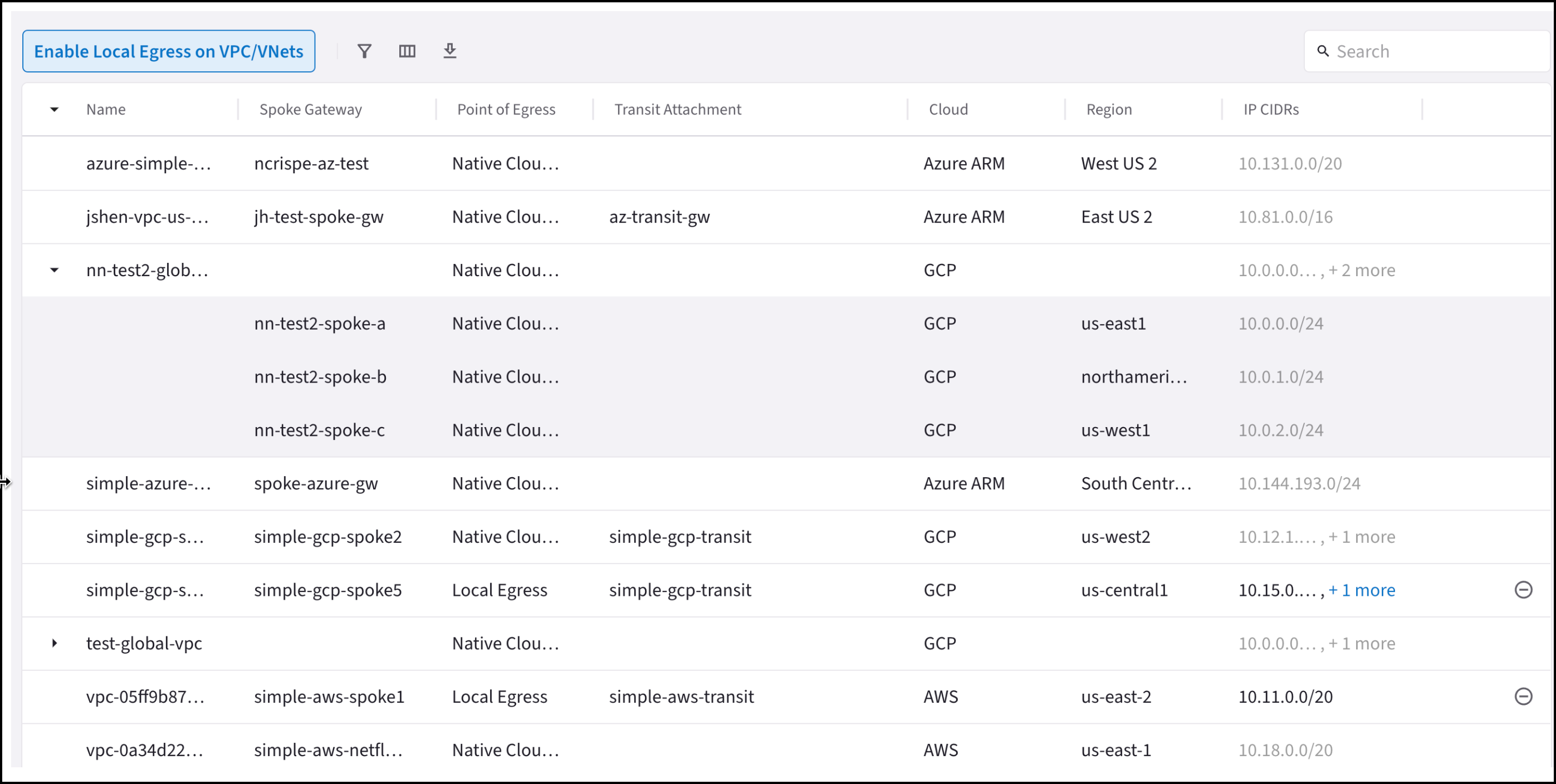Enabling Local Egress
|
If a WebGroup is already configured on a VPC/VNet, make sure that at a minimum they have the following instance size or larger before enabling Local Egress:
|
On the Egress VPC/VNets tab you can enable Local Egress on selected Spoke VPC/VNets that do not already have Egress enabled, and that are not attached to a Transit FireNet gateway.
When you add Local Egress on a VPC/VNet this:
-
Changes the default route on the VPC/VNET to point to the Spoke Gateway
-
Enables SNAT

In the upper right hand corner of the Egress VPC/VNets tab you can select a view for your Egress VPC/VNets: Default (shows comprehensive view of all VPC/VNets where local egress is enabled); Local Egress; and Transit Egress.
This table displays:
-
Spoke gateways that have Local Egress enabled (Spoke gateways that send traffic directly to the Internet).
-
Spoke gateways that have Transit Egress enabled (Spoke gateways that forward traffic to a Transit gateway, which then sends it to the Internet).
This Transit gateway must have Transit Egress Capability (selectable when you create a Transit gateway). -
Spoke gateways where Egress is not configured by Aviatrix (Native Cloud Egress). These are not editable.
-
GCP Spoke gateways that have Global VPC and Transit Egress enabled. These are not editable.
-
Any Transit gateways attached to the Spoke gateways.
To enable local egress:
-
Click Enable Local Egress on VPC/VNets.
-
In the Add Local Egress on VPC/VNets dialog, select the VPC/VNets on which to enable Local Egress.
If you select a VPC/VNet that is part of a Transit Egress this overrides the Transit Egress.
You cannot enable egress on Global VPCs because SNAT is not currently supported for Global VPCs.
-
Click Add.
Removing Local Egress
The following occurs when you remove Local Egress support:
-
SNAT is disabled
-
Default route is reset to Transit Egress or Native Cloud Egress
To remove Local Egress from a Spoke gateway:
-
Click the Remove
 icon next to the Spoke gateway from which you want to remove Local Egress.
icon next to the Spoke gateway from which you want to remove Local Egress. -
Click Remove.